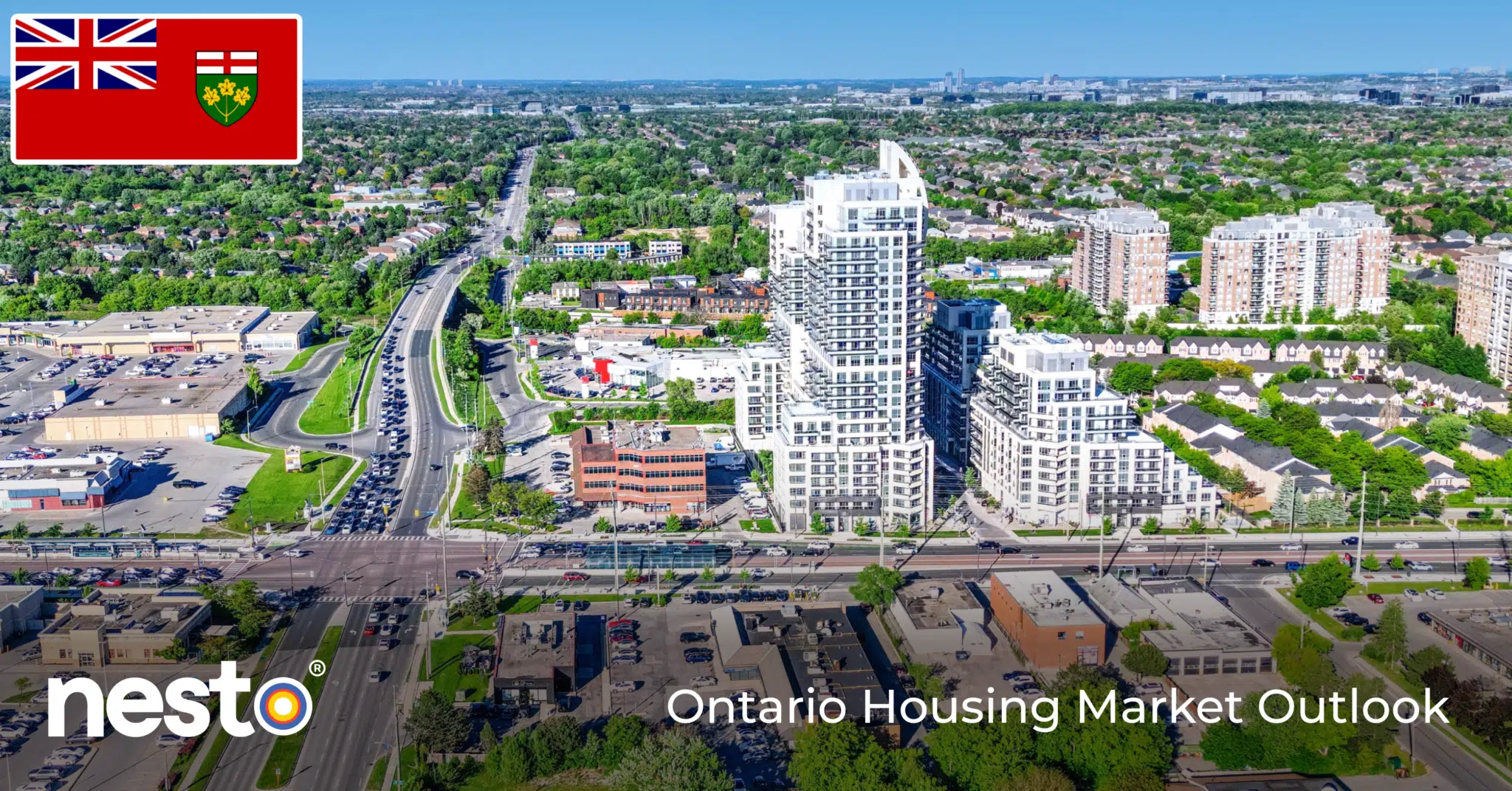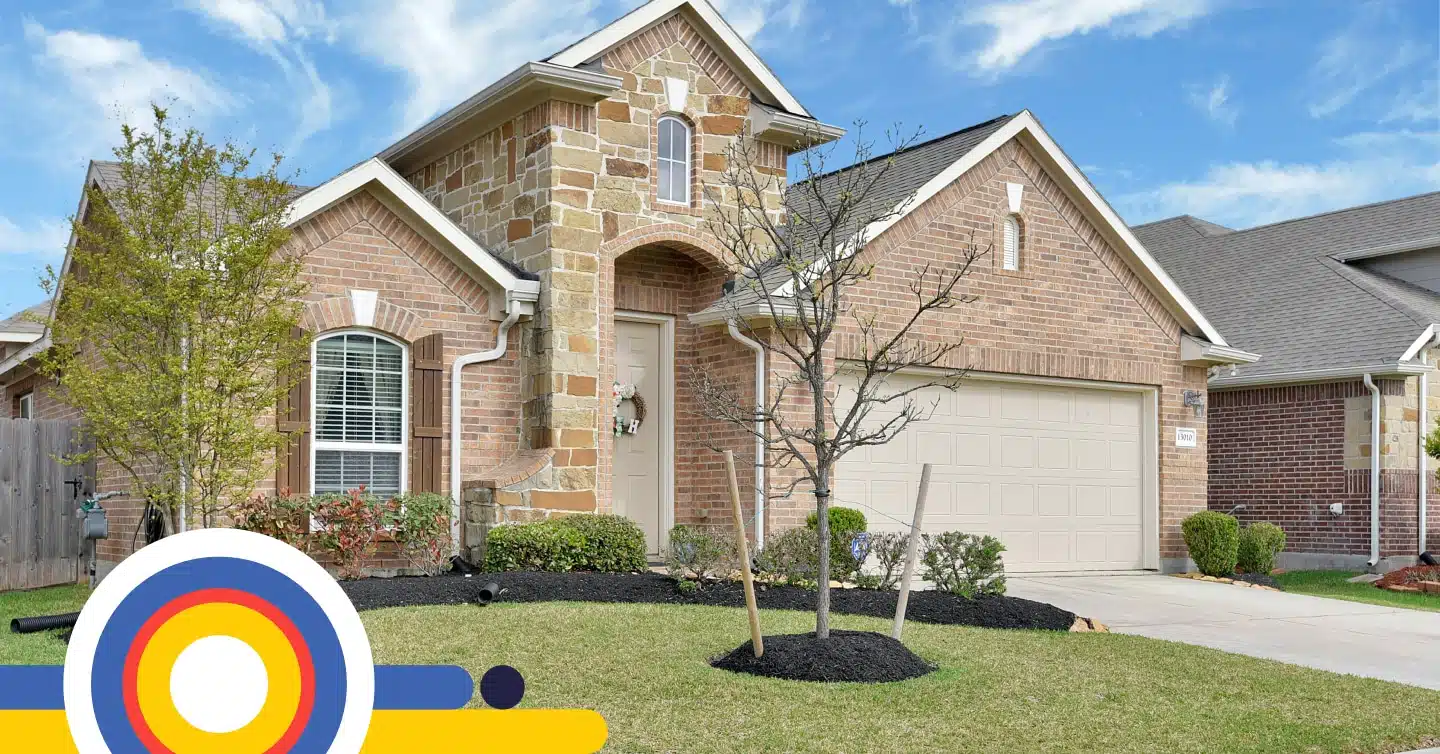Ontario Housing Market Outlook 2025

Ontario Market Report Summary
- The average selling price of a home in Ontario decreased by 6.3% year-over-year to $777,800 in October 2025.
- The average selling price of a single-family home in Ontario decreased by 6.1% year-over-year to $862,300 in October 2025.
- The average selling price of a townhouse/multiplex in Ontario decreased by 7.1% year-over-year to $624,900 in October 2025.
- The average selling price of a condo in Ontario decreased by 8.5% year-over-year to $514,900 in October 2025.
- The average rent in Ontario decreased by 2.2% year-over-year to $2,299 for October 2025.
- November 27, 2025: Today’s lowest mortgage rate in Ontario is
for a 5-year fixed.
Composite Home Prices
![]()
The average selling price of a home in Ontario was $777,800 for the month of October 2025, that’s decreased by 0.5% compared to the previous month. On a year-over-year basis, Ontario home prices have decreased 6.3% over the last 12 months.
Single-family Home Prices
![]()
The average selling price of a single-family home in Ontario was $862,300 for the month of October 2025, that’s decreased by 0.5% compared to the previous month. On a year-over-year basis, single-family home prices in Ontario have decreased by 6.1% over the last 12 months.
Townhouse and Multiplex Prices
![]()
The average selling price of a townhouse in Ontario was $624,900 for the month of October 2025, that’s decreased by 0.5% compared to the previous month. On a year-over-year basis, the price of a townhouse in Ontario has decreased by 7.1% over the last 12 months.
Condo Prices
![]()
The average selling price of a condo in Ontario was $514,900 for the month of October 2025, that’s decreased by 0.7% compared to the previous month. On a year-over-year basis, the price of a condo in Ontario has decreased 8.5% over the last 12 months.
We’re curious…
Are you a first-time buyer?
Ontario Housing Market Summary
Data from the Ontario Real Estate Association (OREA) indicates that the average price of resale residential homes sold across Ontario in October 2025 was $777,800, and it decreased of 6.3% compared to a year ago.
OREA indicates also reported a sales-to-new-listings ratio (SNLR) of 42%, indicating a Balanced in Ontario for October 2025.
Ontario Home Sales Fall 5.7% as New Listings Surge
According to the Ontario Real Estate Association (OREA), Ontario’s housing market saw softer sales but record new supply in October 2025. A total of 15,078 homes traded hands across the province, a 5.7% decline compared to October 2024. Sales landed 2% below the 5-year average and 14.7% below the 10-year average for the month. Year-to-date activity totalled 140,334 sales, down 4.5% from the same period last year. While demand eased, the listing landscape moved in the opposite direction, reshaping market balance heading into late fall.
New Listings in Ontario Surged to a Record-Breaking October
Ontario recorded 35,575 new residential listings this October, an increase of 5.6% from last year and the highest number ever added in an October. New supply sat 17.6% above the 5-year average and 19.1% above the 10-year average. Active listings climbed 12.3% year over year to 69,756 homes, reaching their highest October level in more than 15 years. Active inventory finished the month 43.8% above the 5-year average and 51.1% above the 10-year average. Months of inventory rose to 4.6, up from 3.9 from a year ago and well above the long-run norm of 2.8, signalling a more balanced and slower-moving environment.
Ontario Average Price Declines 5.2%
The average resale price in October was $833,376, down 5.2% year over year. The year-to-date average price settled at $839,394, down 3.5% from the first 10 months of 2024. By comparison, Canada’s national average price fell 1.1% year over year to $690,195. The value of all homes sold in Ontario totalled $12.6 billion in October, down 10.6% from last October, reflecting both weaker sales volumes and lower average prices.
Regional Results Show Clear Divergence Across the Province
Regional performance varied widely across Ontario’s major reporting areas:
- Central Ontario posted 6,621 sales, down 7.3%, with an average price of $1,064,959, down 6.9%.
- Eastern Ontario saw a smaller 2.2% decline in sales to 1,898, while the average price rose 5.3% to $647,085.
- Northeastern Ontario recorded one of the sharpest pullbacks, with sales down 16.6% to 1,403 and the average price down 1.6% to $748,348.
- Northern Ontario bucked the trend, posting a 6.9% increase in sales to 899 and a 3.5% rise in the average price to $397,820.
- Southern Ontario reported 2,347 sales, down 4.5%, with prices sliding 4.4% to $754,949.
- Western Ontario saw a minimal 0.7% decline in sales and a 3.1% decrease in prices to $579,557.
Year-to-date data largely reflected these same patterns, with the Eastern and Northern regions showing strength, while the Central and Northeastern regions continued to face more pronounced slowdowns.
Why Ontario’s Market Shifted in October 2025
Ontario’s October results highlight several key forces shaping market conditions. Rising inventory created more choice for homebuyers and softened competition across many regions. Weaker affordability, slower migration flows, and cautious buyer sentiment kept home sales below historical norms despite record new supply. Meanwhile, price adjustments continued in higher-priced markets, particularly in Central Ontario; meanwhile, the Eastern and Northern regions showed greater resilience thanks to stronger affordability and more balanced supply and demand.
Implications for Ontario Buyers and Sellers in Today’s Market
Buyers in Ontario now have significantly more selection than last fall, especially in markets where inventory has climbed to multi-year highs. This surge in inventory provides Ontario homebuyers with more leverage, more time to evaluate properties, and the ability to negotiate prices or conditions. Sellers face a more competitive environment and need stronger pricing strategies and well-prepared listings to stand out as supply continues to rise. Homeowners looking to refinance may find that stable or modestly declining values still support equity-based financing in many regions.
Red hot rates impacting your housing market experience?
With nesto, you can get a low rate with a 150-day hold.
Month-over-Month Expectations for Ontario
Transactions – Number of Sales
![]()
The number of sales in Ontario was 15,078 during October 2025, that’s increased by 5.1% compared to the previous month. On a year-over-year basis, sales in Ontario have decreased by 5.1% over the last 12 months.
New Listings
![]()
The number of new listings in Ontario was 35,575 during October 2025, that’s decreased by 16.4% compared to the previous month. On a year-over-year basis, new listings in Ontario have increased by 6.8% over the last 12 months.
Real Estate Market
![]()
The sales-to-new-listings ratio (SNLR) in Ontario was 42% during October 2025, indicating a Balanced. On a monthly basis, that’s increased by 25.7% compared to the previous month. Ontario’s yearly sales to new listings ratio has decreased by 11.2% over the last 12 months.
The sales-to-new-listings ratio (SNLR) measures the number of home sales compared to new listings. An SNLR under 40% suggests a buyer’s market in which buyers have the upper hand and more negotiating power. An SNLR between 40% and 60% is a balanced market, while an SNLR of over 60% is considered a seller’s market.
Annual Changes to Regional Composite Home Prices in Ontario
Annual Changes to the Composite Home Price in Ontario
Ontario Market Rents Summary
The average rent in Ontario was $2,299 for the month of October 2025, which decreased by 2.2% on a year-over-year basis.
The average rent for a bachelor apartment in Ontario was $1,727 for the month of October 2025, which decreased by 4.4% on a year-over-year basis.
The average rent for a 1-bedroom apartment in Ontario was $2,046 for the month of October 2025, which decreased by 4.9% on a year-over-year basis.
The average rent for a 2-bedroom apartment in Ontario was $2,501 for the month of October 2025, which decreased by 3.2% on a year-over-year basis.
The average rent for a 3-bedroom apartment in Ontario was $2,046 for the month of October 2025, which decreased by 3.2% on a year-over-year basis.
Red hot rates impacting your housing market experience?
With nesto, you can get a low rate with a 150-day hold.
How Does Renting Compare with Homeownership in Ontario?
Each $100,000 in mortgage balance costs an average of $509.35 per month on nesto’s lowest fixed 5-year rate at
Rental Price Changes by City
Rental Price Changes by Province
Rental Price Growth by Housing Type
We’re curious…
Are you a first-time buyer?
Frequently Asked Questions (FAQ) on Ontario Housing Market Outlook for 2025
Will Ontario’s housing prices increase in 2025?
Ontario’s housing market is expected to stabilize with modest price increases in 2025. Strong population growth, especially in cities like Toronto, Ottawa, Mississauga and Hamilton, will keep demand high. Limited housing supply and declining mortgage rates are key factors that may drive price recovery, particularly in urban and suburban markets.
Will Ontario’s housing market crash in 2025?
Experts believe a crash is unlikely, though certain regions may see minor price adjustments due to rising inventory. Persistent demand, fuelled by immigration and job growth, will continue to support housing values. A balanced market is more likely than a sharp decline.
How affordable will Ontario homes be in 2025?
Affordability in Ontario will remain challenging, especially in cities like Toronto, Markham, Mississauga, and Hamilton, which have above-average prices due to their location in the GTA. However, smaller markets like London and Windsor may offer better affordability for first-time buyers as prices stabilize.
What trends will drive Ontario’s housing market in 2025?
Key trends include declining mortgage rates, population growth, government initiatives to boost housing supply, and increasing demand for suburban and smaller urban areas.
How can I qualify for a mortgage in Ontario in 2025?
To qualify for a mortgage, assess current mortgage rates in Ontario and ensure you meet lender requirements, including the stress test (not required for straight mortgage transfer/switch renewals between NHA-approved lenders). A mortgage pre-approval or prequalification could give you a competitive edge as buyers re-enter the market.
Why Choose nesto
At nesto, our commission-free mortgage experts, certified in multiple provinces, provide exceptional advice and service that exceeds industry standards. Our mortgage experts are salaried employees who provide impartial guidance on mortgage options tailored to your needs and are evaluated based on client satisfaction and the quality of their advice. nesto aims to transform the mortgage industry by providing honest advice and competitive rates through a 100% digital, transparent, and seamless process.
nesto is on a mission to offer a positive, empowering and transparent property financing experience – simplified from start to finish.
Contact our licensed and knowledgeable mortgage experts to find your best mortgage rate in Canada.
Ready to get started?
In just a few clicks, you can see our current rates. Then apply for your mortgage online in minutes!



